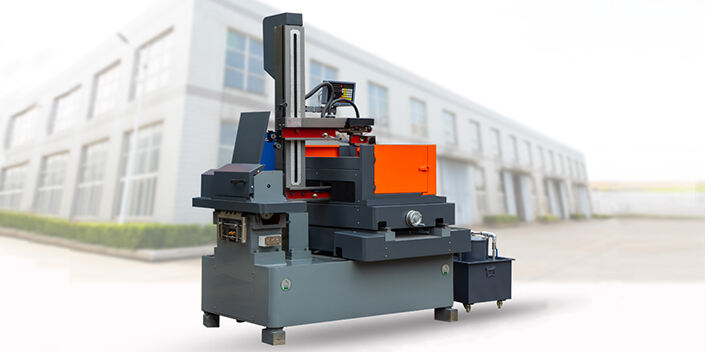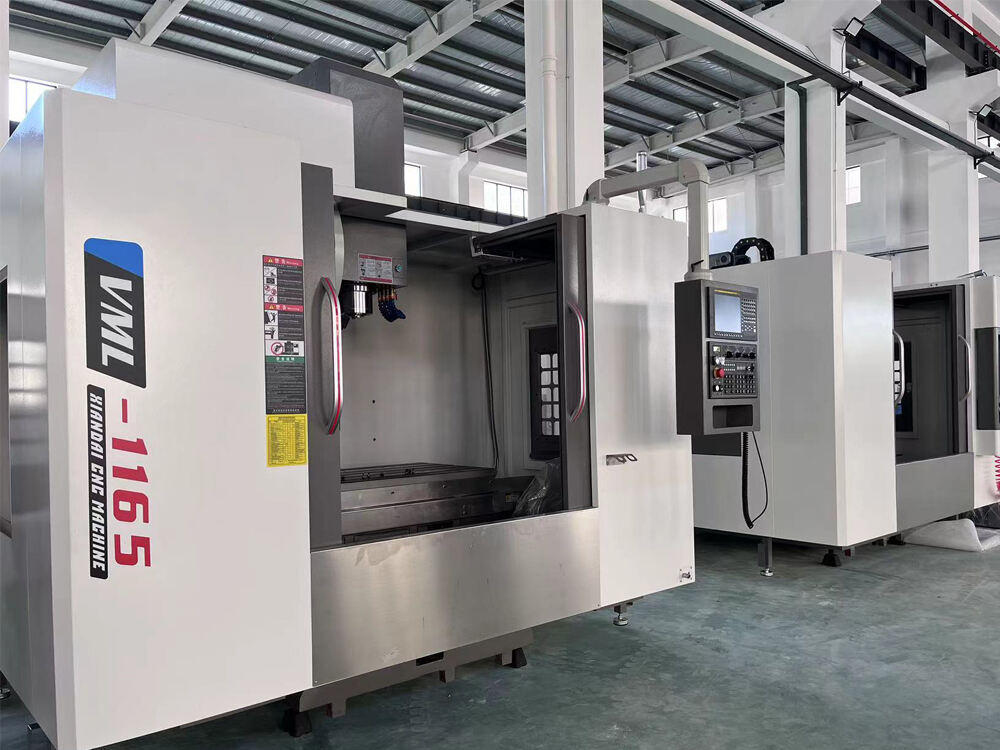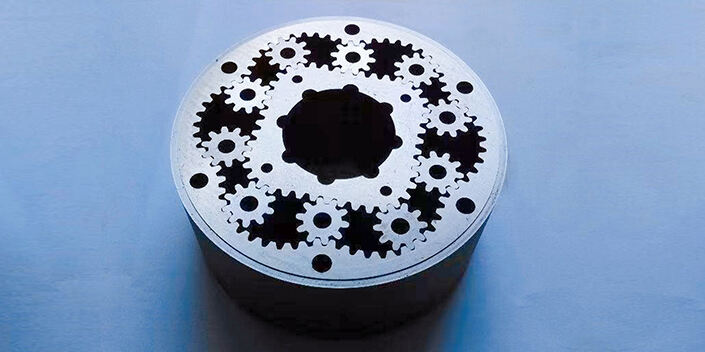The Evolution of Cut to Length Line Automation and Control Systems
From Mechanical Relays to PLCs and HMIs: A Technological Leap in Cut to Length Line Control
Cut to length production lines are no longer relying on basic mechanical controls but have moved toward advanced programmable logic controllers or PLCs along with human machine interfaces known as HMIs. Back in the day, workers had to tweak those old relay systems by hand, but nowadays these integrated PLC setups can make adjustments within fractions of a millisecond. Setup times have dropped about 40 percent when compared with older equipment according to what we saw in last year's Industrial Automation Trends Report. The big benefit here is that all the different parts of the process decoiling, feeding material through, and actually cutting it can work together in real time without any lag. Plus, manufacturers can stick pretty close to their target measurements too, usually staying within plus or minus 0.2 mm on the final product lengths.
Integration with Industry 4.0 and Smart Factory Ecosystems
Manufacturers are increasingly putting IoT sensors right into their cut to length line equipment these days. These devices send around fifteen different operational readings every single second over to cloud based analytics systems. According to recent research from the Industrial Automation field in 2024, machines that use MQTT protocols can hit nearly 92 percent overall equipment effectiveness by predicting when parts like shear blades and servo motors start showing signs of wear. The ability to connect all this equipment means factory managers can keep an eye on how things are performing remotely at various locations throughout their operations. Plus it works well with existing industry standards like ANSI/ISA-95 which helps everything talk to each other properly in modern smart manufacturing setups.
AI and Data-Driven Optimization in Modern Cut to Length Line Operations
The application of machine learning in manufacturing has shown real results when it comes to improving material efficiency. Factories that have started using these smart systems report cutting down on waste significantly, sometimes between 12 to 18 percent less scrap from coils alone thanks to better pattern arrangements during cutting processes. Looking ahead, most estimates suggest that around two thirds of the more sophisticated cut to length production lines will be equipped with visual inspection tech by the middle of this decade. These systems can adjust themselves on the fly as they detect changes in material thickness throughout the production cycle. This kind of real time adaptation is becoming essential for working with those tough high strength metals used so much in car manufacturing today.
Core Components and Control Architecture of a Cut to Length Line
Key Subsystems: Decoiler, Feeder, Shear, and Stacker Under Centralized PLC Control
Cut-to-length production lines today typically combine four main components controlled through PLC systems. First comes the hydraulic decoiler which unwinds those heavy metal coils while keeping tension just right so nothing gets damaged during processing. Material then moves along to a servo driven feeder system that pushes sheets forward with pretty impressive accuracy around plus or minus 0.2 mm. Next up are these powerful shears capable of making clean cuts at over 120 strokes per minute. Finally, automated stackers take care of organizing all those finished sheets with proper spacing between layers for easier handling later on. When everything works together under central PLC control, operations run much smoother than old manual setups, cutting down overall cycle times somewhere around 25% in most cases.
Role of Sensors, Servo Drives, and IoT in Real-Time Monitoring and Precision
Most modern cut to length operations now use IoT based condition monitoring systems to get better performance out of their equipment. The encoder feedback tracks where the strip is positioned down to about half a tenth of a millimeter precision. At the same time, load cells keep tabs on how much tension there is as materials move through at high speeds. All this information gets fed into predictive software that can tweak the servo motors' torque settings on the fly. When dealing with varying material thicknesses, these adjustments help cut down dimensional errors significantly. Some plants report around a 40 percent reduction in such issues when working with automotive grade steel products.
Closed-Loop Control Systems for Adaptive Process Adjustments
Cut to length systems with advanced architecture incorporate self correcting workflows using closed loop controls. If laser sensors spot any edge misalignment issues, the machine will adjust guide positions on its own without slowing down production speed much. This kind of adaptability really matters for materials that vary in gauge thickness something older machines would need someone to manually fix. The real time thickness gauges let operators tweak shear pressure as needed, so cuts stay consistent whether working with aluminum between half a millimeter and six millimeters thick or stainless steel ranging from three tenths to three full millimeters. No need to stop the line for these adjustments either.
Precision, Repeatability, and Quality Control in Cut to Length Operations
Critical Parameters: Thickness, Width, Length Accuracy, and Cutting Speed
Modern cut to length lines achieve ±0.1 mm dimensional consistency across four vital metrics: material thickness, sheet width, cut length accuracy, and feed speed. Advanced sensor arrays paired with real-time monitoring systems verify these parameters 800 times per second, enabling automatic compensation for material inconsistencies.
Achieving Tight Tolerances Through Advanced Servo Systems and Control Algorithms
High-torque servo motors with 0.001° positional resolution work in concert with predictive algorithms to maintain cutting precision at speeds up to 120 m/min. These systems automatically adjust for tool wear, thermal expansion, and material springback—key factors that historically caused tolerance drift in mechanical systems.
Case Study: Reducing Scrap Rates by 18% Using Real-Time Feedback Loops
A North American steel processor implemented machine vision-assisted quality control across their cut to length line, creating closed-loop adjustments for shear positioning. This intervention reduced edge deformation defects by 23% and achieved an 18% reduction in material scrap rates within six months of deployment.
Productivity Gains and Operational Efficiency for OEMs
Measurable Improvements in Throughput and Uptime
Advanced cut to length line systems enable 18–25% higher throughput compared to manually calibrated equipment, according to 2023 data from the International Manufacturing Technology Council. Modern PLC-controlled operations maintain 98.6% uptime by synchronizing decoiler feeding speeds with servo-driven shearing cycles, minimizing bottlenecks in high-volume production environments.
Predictive Maintenance and HMI Diagnostics to Reduce Unplanned Downtime
Real-time vibration analysis sensors paired with HMI dashboards predict bearing failures 72–96 hours before critical breakdowns occur. Case studies show this IoT-enabled approach reduces unplanned downtime by 41% in automotive stamping plants while extending equipment lifespan by 2.8 years—a strategic advantage confirmed in the 2024 Smart Factory Maintenance Report.
Cost Efficiency and Scalability Advantages of Advanced Cut to Length Line Systems
Centralized control architectures lower operating costs through:
- 15–22% reduced material waste via closed-loop length compensation algorithms
- 30% faster product changeovers using pre-loaded HMI tooling profiles
- $0.19 per-unit savings from predictive energy optimization modes
OEMs achieve rapid ROI scaling with modular configurations that adapt to sheet widths from 600 mm to 2,400 mm without mechanical redesigns—a critical flexibility metric verified in the 2023 Metalforming Automation Index.
Future Trends: Smart Manufacturing and the Next Generation of Cut to Length Lines
AI-Driven Dynamic Scheduling and Material Utilization Optimization
Cut-to-length lines today are getting smarter thanks to artificial intelligence that helps fine tune production processes on the fly. The AI looks at things like what kind of materials are being used, how many orders need processing, and how well machines are performing right now. What happens next is pretty impressive these systems can change how parts fit together and the order they get cut in, which cuts down on wasted material by around 15% when compared to older fixed programming approaches. According to a recent report from the smart manufacturing sector in 2025, these intelligent systems actually talk to inventory records so they know which jobs need attention first. And despite all this automation, they still manage to keep measurements spot on within just 0.1 millimeters across different metals like stainless steel and aluminum plus various composite materials commonly found in industrial settings.
Predictive Quality Assurance Using Machine Learning Models
Modern machine learning setups can spot potential cutting problems before they happen by looking through massive amounts of sensor data collected from all sorts of equipment including feeders, shears, and stackers on the production line. When these smart systems notice changes in material thickness alongside things like fluctuating humidity levels, they automatically tweak settings on servo motors and realign shear blades to compensate. The results speak for themselves really - factories report around a 40 percent drop in those pesky edge burrs when running at top speed during electrical steel lamination production for motor cores. And let's face it, cleaner cuts mean fewer headaches later on during assembly processes down the manufacturing pipeline.
Global Adoption Trends in Automotive and Appliance Manufacturing Sectors
The automotive sector is really pushing ahead with Industry 4.0 tech, and according to IMechE's latest report from 2024, around two thirds of European car makers have already implemented smart cutting systems for producing battery trays. Meanwhile appliance manufacturers are catching on too, using similar automated cutting solutions to work with those complex multi layer insulation materials needed for their energy efficient fridge models and modern oven designs. Things get even more interesting when we look at what's happening in emerging economies. Take India and Brazil for instance where businesses report seeing returns on investment come back about 25 percent quicker than elsewhere. This happens because they're using modular cutting setups that can expand or contract depending on how much construction material or HVAC parts people need at any given time.
FAQ
What is a cut to length production line?
A cut to length production line is a system used in manufacturing to cut metal coils into exact lengths according to specific requirements. It involves several components like decoilers, feeders, shears, and stackers, all controlled by advanced systems to ensure precise cuts.
How do PLCs and HMIs enhance cut to length lines?
PLCs (Programmable Logic Controllers) and HMIs (Human Machine Interfaces) offer precise control and automation, allowing adjustments to be made quickly and helping reduce setup times. They allow various components in the process to synchronize effectively in real-time.
Why are IoT sensors used in modern cut to length lines?
IoT sensors help in gathering real-time data from the production line, which can be analyzed to optimize operations, predict maintenance needs, and ensure higher equipment effectiveness. This integration is essential for aligning with Industry 4.0 standards.
How does AI contribute to cut to length operations?
AI contributes significantly by optimizing material utilization, reducing waste, and enhancing production processes dynamically. It uses data-driven approaches to adapt to changing conditions without manual intervention, maintaining high precision even with difficult materials.
What are the future trends in cut to length production lines?
The future trends include increased adoption of AI for dynamic scheduling, machine learning for predictive quality assurance, and the global adoption of these advanced systems, especially in the automotive and appliance manufacturing sectors.





